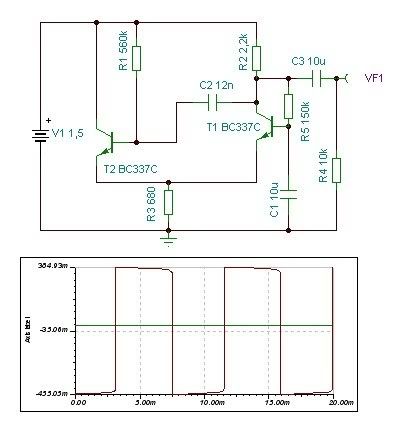I found this circuit somewhere on the web and it seemed interesting as pocket SQW generator. Simulation shown not perfect square so I wonder is it possible to improve it?



You don't have to worry, that's true.Well not 100% true but close to be :I just worry that you seem to be using the sim as an excuse not to really understand the circuits.
JohnRoberts said:Pretty easy to roll something around CMOS gates.
Moby said:Anyway, did you tried XR2206? Not simple as 2 tr but it can be multiple function generator.
Moby said:Also I think you misunderstand my idea. I don't want to design circuit, I just want to build it and use to test some equipment
No, just simple tone generator for audio measuring purpose. 1-5V amplitude, 10hz-200khz... or something similar. I was looking for some existing verified DIY project, like this http://tehnikservice.net/2007/11/xr2206-function-generator.html that's why I asked for XR2206Svart said:I have yet to see any specifications for your needs.
Hz? Khz? Mhz? Ghz?
Amplitude?
Does it need to vary?
Is this going to be a clock? What is it clocking?
Etc.
All this stuff could be very important to your application.

Well , yes I started from simple circuit because I needed square gen but why not to have sine and tri all together since my initial idea is not so great. I have sine / noise generator in my console but who cares to have one more> did you tried XR2206?
It works. You can't buy 10,000 but you can buy a few. It is MUCH more than you have asked for. It has a lot of pins, it has a Sine converter, it has HIGH power draw compared to many simpler plans.
So do you need all that?
I wanted to have one wire less! But yes, battery's are dead in the moment you need themBattery power may be nice.
Thanks for link.he CMOS Schmitt and R-C network will give very clean audio square waves. A bit asymmetrical, but do you care? http://www.intersil.com/data/fn/fn3354.pdf page 8